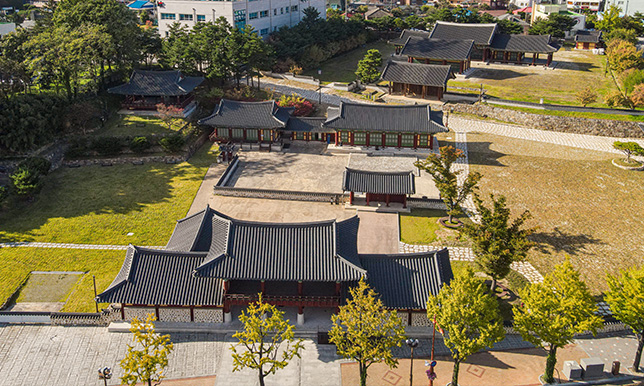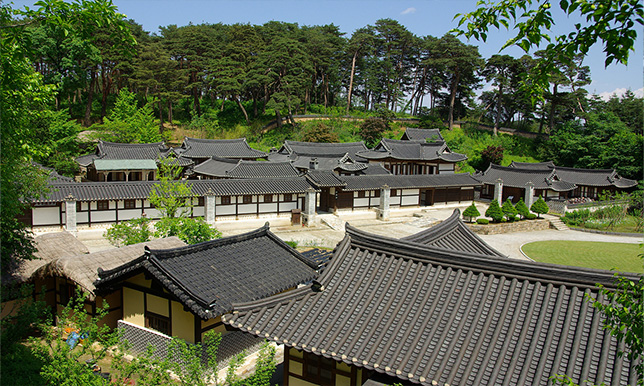Tangible CulturalHeritage
Gangneung, the City of Tradition and Culture
As an ancient capital on the east side of the Baekdudaegan Mountain Range, Gangneung has been the hub of the Yeongdong area since ancient times. The architectural culture is linked to the diverse cultural traditions of both the mountains and the sea. Buildings such as government offices, pavilions, hyanggyo, seowon, temples, and private houses are exquisite and beautiful, and the cultural value of the remaining tangible cultural heritage is very high.
-

Daedohobu Government Office
Daedohobu Government Office is located in the area of 6, Imyeong-ro 131beon-gil, Gangneung-si, Gangwon-do [58-1 Yonggang-dong], and to the south of it, the Main Gate of Imyeonggwan Guesthouse, National Treasure No. 51, is located.
Daedohobu is the name of the government office building that governs a large local town, and Imyeonggwan is the place where the kings' ancestral tablets are housed.
The Gate of Imyeonggwan Guesthouse in Gangneung is the most significant and oldest guesthouse gate. Both Imyeonggwan and its Guesthouse Gate are significant historical and cultural sites of the ancient Gangneung government. -

Gangneunghyanggyo Local Confucian School
Gangneung Hyanggyo, located in Gyo 2-dong, Gangneung-si, was first founded by Kim Seung-in, a government official from Gangwon-do, in the 5th year of King Chungseon of Goryeo (1313). After being destroyed in the 11th year of King Taejong of Joseon (1411), it was restored by a proposal initiated by Gangneung Dohobu Judge Yi Maeng-sang with 68 Gangneung scholars and has since been extended and renovated multiple times.
Hyanggyo consists of Daeseongjeon, the central building for worshipping, and Myeongnyundang, the central building for teaching, and its functions are mainly divided into ancestral rites and education. Munmyo refers to all of Daeseongjeon, Dongmu, and Seomu, and ancestral rituals are conducted here every year in the lunar months of February and August. Gangneung Hyanggyo is a well-known place for enshrining the largest number of ancient sages in the country, indicating that Gangneung is traditionally a city of culture and arts. -

Seongyojang House
It is a beautiful traditional house that has been beautifully conserved in its original shape for 300 years and was designated as a National Folklore Cultural Asset No. 5 in 1965.
